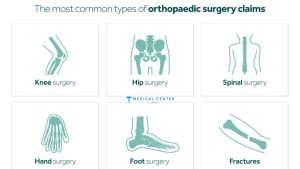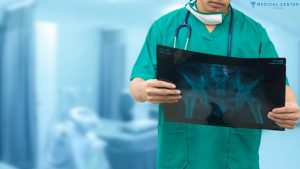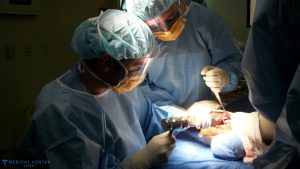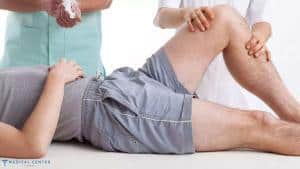Innovation in Orthopedic Cosmetic Surgery in Turkey
Innovation in Orthopedic Cosmetic Surgery in Turkey is an article that aims to give you all the information you do not know about Innovation in Orthopedic Cosmetic Surgery in Turkey and more. We kindly shared the main headings with you;
What is Orthopedic Cosmetic Surgery?
Orthopedic cosmetic surgery refers to a specialized field that combines orthopedic surgery (focused on the musculoskeletal system) with aesthetic or cosmetic enhancements. The goal of this type of surgery is to improve both the functionality and appearance of bones, joints, muscles, and tissues, typically to address congenital deformities, trauma, aging, or other conditions that affect the musculoskeletal system.
Key Areas of Orthopedic Cosmetic Surgery
Cosmetic Joint Surgery
Joint Reshaping: This includes procedures that aim to reshape joints or improve their appearance while restoring their functionality. For example, reshaping the knee or elbow after trauma or correcting congenital joint deformities.
Total Joint Replacement: While joint replacements (like hip or knee replacements) are generally performed to restore function, some patients also seek these surgeries for aesthetic reasons (e.g., to reduce the visible signs of aging in the joints or correct deformities).
Bone Lengthening Surgery
Limb Lengthening: A procedure often sought by people who want to increase their height. This is achieved through distraction osteogenesis, where a broken bone is gradually stretched after being surgically separated, allowing new bone tissue to form. While this is often performed for medical reasons (such as limb length discrepancies), some patients pursue it for cosmetic reasons to improve their height.
Deformity Correction
Correcting Congenital Deformities: Orthopedic cosmetic surgery can address congenital deformities, such as bowed legs or misshapen arms or feet, and correct them for both functional and aesthetic purposes.
Trauma Reconstruction: This includes procedures to repair bones, joints, and muscles after traumatic injuries or accidents that have led to deformities, scarring, or visible asymmetry. Surgeons may use implants, bone grafts, and other techniques to restore appearance.
Cosmetic Spine Surgery
Spinal Deformity Correction: Procedures like spinal fusion or vertebral reshaping may be done to correct deformities in the spine (such as scoliosis or kyphosis) that affect posture, alignment, and the overall appearance of the back.
Posture Improvement: Some individuals opt for surgery to improve posture and enhance the overall aesthetic of their spine, which can sometimes have a cosmetic effect on the overall appearance of the torso.
Cosmetic Foot and Ankle Surgery
Foot Reshaping: Procedures such as bunionectomy (removal of bunions), hammer toe correction, and cosmetic foot reshaping aim to improve both the function and appearance of the feet. This may be particularly important for patients with functional issues or those seeking to improve the appearance of their feet for cosmetic reasons.
Ankle Surgery: Cosmetic ankle surgery may be performed to correct deformities or improve symmetry, especially after an injury or for congenital issues.
Cosmetic Hand and Wrist Surgery
Hand Rejuvenation: Procedures like hand lifting, tendon repair, and cosmetic hand surgery may be used to treat signs of aging, such as sagging or wrinkling, or to correct deformities caused by conditions like arthritis or previous injuries.
Finger Lengthening: Similar to limb lengthening, some individuals opt for finger lengthening procedures for cosmetic reasons.
Aesthetic Muscle Procedures
In some cases, orthopedic cosmetic surgery may involve muscle augmentation or reconstruction to improve muscle definition, symmetry, or functionality. This could involve surgical enhancements to improve the shape of the body or specific muscle groups, often used in conjunction with body contouring procedures.
Reasons for Seeking Orthopedic Cosmetic Surgery:
Aesthetic Improvement: Many individuals pursue orthopedic cosmetic surgery to improve the appearance of their bones, joints, or muscles, whether for personal satisfaction or to feel more confident in their bodies.
Functional Restoration: In cases of injury or congenital deformity, surgery may be required to restore functionality to a part of the body while simultaneously improving its appearance.
Trauma or Accident Recovery: After accidents, injuries, or surgeries that leave deformities or scarring, orthopedic cosmetic surgery can help patients return to their pre-injury appearance, or achieve an improved one.
Height Increase: For those who feel their height is a source of low self-esteem or for those with congenital limb length discrepancies, orthopedic cosmetic surgery may offer a solution.
Joint or Limb Deformity Correction: Some individuals seek to correct visible deformities or malformations in their joints or limbs, often to improve both function and cosmetic appearance.
Risks and Considerations:
Surgical Risks: As with any surgery, orthopedic cosmetic procedures come with risks, such as infection, scarring, blood clots, or anesthesia complications. Proper consultation with a qualified orthopedic surgeon is crucial to assess these risks.
Recovery and Aftercare: Depending on the procedure, recovery times can vary, and patients must follow strict aftercare instructions to avoid complications and ensure proper healing.
Cost: Cosmetic orthopedic procedures are typically not covered by insurance, as they are elective surgeries. The cost can vary widely depending on the procedure and location, but they are generally considered expensive.
Orthopedic cosmetic surgery is a specialized field that combines aesthetic improvements with orthopedic principles to address a range of musculoskeletal concerns. Whether for functional restoration, deformity correction, or purely aesthetic purposes, these procedures can greatly enhance a patient’s appearance and quality of life. However, as with any surgical intervention, careful consideration, professional consultation, and realistic expectations are essential to achieving the best results.
Who Can Have Orthopedic Cosmetic Surgery?
Orthopedic cosmetic surgery is typically suitable for individuals who meet certain medical, aesthetic, and personal criteria. The decision to undergo these types of procedures depends on a combination of factors such as the patient’s health, their reasons for seeking surgery, and their specific goals. Here’s a breakdown of who can benefit from orthopedic cosmetic surgery:
Individuals with Functional or Aesthetic Concerns
Those Seeking Aesthetic Improvement: People who are dissatisfied with the appearance of certain body parts—such as their limbs, joints, hands, feet, or spine—due to deformities, asymmetry, or the effects of aging may consider orthopedic cosmetic surgery to enhance their appearance.
People with Joint Deformities or Asymmetry: Individuals who have joint deformities, such as bowed legs, uneven hips, or asymmetrical knees may seek surgery to correct these conditions and achieve a more balanced, symmetrical appearance.
People with Bone or Limb Length Discrepancies: People with congenital limb length discrepancies or those seeking to increase their height through limb lengthening may consider this surgery. However, candidates should be in good health and meet the specific age requirements for the procedure.
Candidates with Deformities Due to Trauma or Injury
Post-Trauma Reconstruction: Those who have suffered injuries (fractures, dislocations, or accidents) that left lasting deformities, scarring, or functional impairments may seek orthopedic cosmetic surgery to restore the functionality and appearance of the affected body part.
Patients with Complex Fractures or Dislocations: After a severe fracture or dislocation, patients may experience deformities in the bone or joint. Surgery can help correct these and improve the overall appearance and mobility of the area.
People with Congenital Deformities
Congenital Limb Deformities: Individuals born with disproportionate limbs, joint misalignments, or other congenital musculoskeletal deformities may undergo surgery to correct these issues. Examples include clubfoot, bowed legs, or scoliosis.
Congenital Dislocations: In cases where patients are born with joints that are out of alignment or other musculoskeletal issues, corrective orthopedic surgery can help improve both function and aesthetics.
Aging Individuals Seeking Aesthetic Enhancement
Joint Reshaping and Cosmetic Enhancements: As people age, they may develop visible deformities or issues with the appearance of their joints, such as arthritis, joint stiffness, or worn cartilage. Some older individuals may seek cosmetic surgery to improve the appearance of their knees, hips, or hands, and reduce the visible signs of aging.
Spinal Deformities (e.g., Scoliosis, Kyphosis): Aging individuals with postural changes, such as hunchback or curved spines, may opt for cosmetic spinal surgery to enhance posture and improve their overall appearance.
Those Seeking to Correct Physical Imbalances
Muscle and Bone Reshaping: People seeking to correct asymmetries in their muscle tone or bone structure (such as through fat transfer or bone-lengthening surgery) may seek these surgeries to enhance their body proportions or improve alignment.
Spinal Realignment: Some individuals may want to correct posture-related deformities or asymmetry in their back or torso, which can be achieved through surgeries like spinal fusion or vertebral reshaping.
Those Who Have Realistic Expectations and Are in Good Health
Physical Fitness: Candidates for orthopedic cosmetic surgery should generally be in good overall health and physical condition. They should have a reasonable expectation of recovery and results. Being in good shape can also support better healing outcomes.
Healthy Bones and Joints: Candidates should have strong, healthy bones and joints without underlying conditions that might interfere with healing or complicate the surgery (e.g., active osteoporosis, arthritis, or bone infections).
Age Requirements: Some orthopedic cosmetic procedures, such as limb lengthening or bone reconstruction, may have age restrictions, typically being more suitable for adults whose bones have stopped growing. Children or teenagers may not be candidates for certain procedures unless there is a medical necessity.
Patients Seeking Symmetry and Balance
Body Symmetry Correction: People who feel that their body proportions or symmetry are off may choose orthopedic cosmetic surgery to correct physical imbalances, such as limb length discrepancies or asymmetrical bone structures (e.g., a crooked nose or jaw).
Post-Surgery or Post-Accident Individuals
Recovering from Accidents: After a traumatic injury or accident, patients might experience musculoskeletal deformities or functional problems. Orthopedic cosmetic surgery can help restore the body’s aesthetic and functional alignment.
Surgical Reconstruction: Some people undergo orthopedic cosmetic procedures to reconstruct body parts after previous surgeries, such as joint replacement or fracture healing, which may have left visible deformities.
Psychological and Emotional Readiness
Realistic Goals: Candidates should have realistic expectations and clear goals about what they want to achieve through surgery. Psychological readiness is important because cosmetic surgery may not always result in perfect results.
Self-Esteem and Motivation: Patients should undergo these procedures for their own satisfaction and not due to external pressure. Those with a healthy psychological outlook tend to have better post-operative satisfaction.
Contraindications (Who Should Not Have Orthopedic Cosmetic Surgery)
Severe Health Conditions: Individuals with chronic health conditions, such as uncontrolled diabetes, heart disease, or blood clotting disorders, may not be suitable candidates for surgery.
Active Infections: Any active infection or systemic illness should be treated before surgery.
Unrealistic Expectations: People expecting dramatic or unrealistic results may not be ideal candidates, as cosmetic orthopedic surgery is aimed at improving appearance and functionality, but not perfecting it.
Age Restrictions: Some surgeries, especially those related to bone growth (like limb lengthening), may not be suitable for younger patients whose bones have not fully matured.
Orthopedic cosmetic surgery is most suitable for individuals who want to correct deformities, improve symmetry, or enhance the appearance and function of their bones, joints, or muscles. It’s ideal for those who are in good health, have realistic expectations, and are motivated by personal reasons rather than external pressures. Consulting with an experienced orthopedic surgeon is essential to determine the best approach based on individual needs and goals.
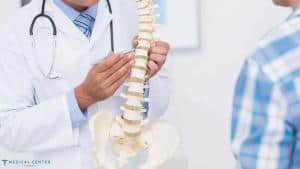

Is Turkey a Good Choice for Cosmetic Orthopedic Surgery?
Turkey is considered a strong choice for cosmetic orthopedic surgery due to its combination of high-quality medical services, skilled specialists, and affordability. The country has invested significantly in its healthcare infrastructure, with many hospitals and clinics accredited by international bodies such as the Joint Commission International (JCI). Turkish orthopedic surgeons are often trained and certified internationally, ensuring that they have the expertise to perform complex cosmetic and reconstructive procedures effectively. Additionally, many clinics in Turkey use state-of-the-art technology and adhere to stringent safety and hygiene protocols, providing patients with reliable and cutting-edge treatment options. The cost of cosmetic orthopedic procedures in Turkey is typically lower than in Western countries, which attracts medical tourists looking for excellent care at a more affordable price. With comprehensive medical packages that often include consultation, accommodation, and post-operative care, Turkey has become a popular destination for those seeking cosmetic orthopedic solutions.
What are the Innovations in Orthopedic Cosmetic Surgery in Turkey?
Turkey is at the forefront of orthopedic cosmetic surgery innovations, offering advanced techniques and cutting-edge technology to provide high-quality care for both functional and aesthetic enhancements. Some of the key innovations and trends in orthopedic cosmetic surgery in Turkey include:
Minimally Invasive Techniques
Arthroscopy: Minimally invasive arthroscopic surgery is widely used in Turkey for joint reshaping, ligament reconstruction, and cartilage repair. This technique involves small incisions, reducing the risk of scarring, speeding up recovery, and minimizing post-operative discomfort.
Endoscopic Spinal Surgery: For patients with spinal deformities or issues like scoliosis or herniated discs, endoscopic techniques are used to minimize the size of incisions, leading to faster recovery and less trauma to surrounding tissues.
Limb Lengthening and Bone Regeneration
Precise Limb Lengthening with the Ilizarov Technique: Limb lengthening is a popular cosmetic procedure in Turkey for those seeking to increase their height. Surgeons use the Ilizarov method, which involves the gradual stretching of bones after they have been surgically divided. The method has been refined to offer faster recovery, less discomfort, and more predictable results compared to earlier versions.
Bone Regeneration and Growth Stimulators: Turkey’s orthopedic centers have adopted bone regeneration technologies to enhance healing, improve outcomes, and reduce recovery time. Bone stimulators and growth factors are used to promote faster bone healing and better integration during limb lengthening or other procedures that involve bone reconstruction.
3D Printing for Pre-Operative Planning and Custom Implants
3D Modeling for Personalized Implants: Turkish orthopedic surgeons use 3D printing technology to create customized implants and prosthetics tailored to the patient’s unique anatomy. This ensures that implants fit more naturally, reducing complications and improving the functional and aesthetic outcomes of surgeries.
Pre-Operative Simulation with 3D Models: Surgeons in Turkey use 3D-printed models of patients’ bones and joints for pre-operative planning. These models help the surgeon visualize the exact condition of the bone or joint, leading to more accurate and precise procedures, especially in complex cases.
Robotic-Assisted Orthopedic Surgery
Robotics in Joint Replacement: Robotic-assisted systems like MAKO and NAVIO are being used in Turkish hospitals to improve the precision of knee and hip replacement surgeries. These systems offer more accurate bone cuts, better alignment of the implant, and a faster recovery period.
Robotic Limb Lengthening: Some advanced Turkish clinics use robotic systems for limb lengthening procedures. Robots help with precise bone cuts and ensure that the lengthening process is controlled and accurate, minimizing human error.
Stem Cell Therapy and Platelet-Rich Plasma (PRP)
Stem Cell Regeneration: In Turkey, orthopedic surgeons use stem cell therapy to repair damaged cartilage and bones, especially in cases of osteoarthritis and joint degeneration. Stem cells can help regenerate tissues, reducing the need for more invasive procedures like joint replacement.
Platelet-Rich Plasma (PRP) Therapy: PRP therapy is used in Turkey to treat injuries, encourage tissue regeneration, and reduce inflammation. It’s commonly applied in joint resurfacing, ligament repairs, and tendon injuries. PRP uses the patient’s own blood to extract growth factors, which are then re-injected into the affected area to promote healing.
Advanced Spinal Deformity Correction
Scoliosis Correction with Minimally Invasive Techniques: Surgeons in Turkey employ minimally invasive techniques for scoliosis and other spinal deformities, reducing the size of incisions and shortening recovery times. Additionally, modern titanium rods and advanced fusion techniques help correct spinal curves while minimizing the risk of complications and enhancing post-operative appearance.
Vertebral Body Tethering (VBT): This emerging technique is used for spinal deformity correction in adolescents and young adults. VBT is less invasive than traditional spinal fusion and helps preserve flexibility in the spine, leading to a more natural post-operative outcome.
Computer-Assisted Orthopedic Surgery
Computer Navigation for Joint Replacement: In Turkey, many orthopedic clinics use computer-assisted navigation systems for procedures like knee and hip replacements. These systems help ensure precise implant placement and alignment, improving long-term outcomes and reducing the risk of complications.
Computer-Aided Design (CAD) for Customization: Using CAD software, surgeons can design personalized implants or orthopedic solutions based on the patient’s exact anatomical needs, ensuring a better fit and more natural appearance.
Soft Tissue Reconstruction and Aesthetic Enhancements
Soft Tissue Augmentation: For patients seeking cosmetic enhancement of the joints or limbs, some Turkish orthopedic surgeons use fat grafting or muscle tissue augmentation to improve body contours or restore volume lost due to aging, injury, or surgery.
Cosmetic Hand and Foot Surgery: Orthopedic surgeons in Turkey are increasingly performing procedures to improve the aesthetics of the hands and feet, such as finger lengthening, hand rejuvenation, or bunion correction using advanced techniques that improve both the function and look of the extremities.
Laser-Assisted Orthopedic Procedures
Laser Treatments for Bone Reshaping: In some cases, laser therapy is used as a non-invasive method to reshape bones or joints for cosmetic purposes, reducing recovery time and improving the precision of reshaping procedures.
Laser-Assisted Spine Surgery: Surgeons in Turkey are using lasers in spinal decompression surgery to reduce pressure on the spinal cord and nerves, improving patient outcomes with minimal scarring.


Customized 3D Printed Orthotics and Prosthetics
3D Printed Orthotics: Custom orthotics are increasingly being designed using 3D printing technology in Turkey. These orthotics are personalized to the exact measurements and contours of the patient’s feet or joints, improving comfort and function while providing better aesthetic results.
Personalized Prosthetics: For patients who have undergone amputations or deformity corrections, 3D printed prosthetics offer a higher degree of customization, not only in terms of fit but also in terms of appearance, allowing for more natural-looking and functional replacements.
Turkey continues to be a leader in orthopedic cosmetic surgery, driven by its adoption of advanced technologies, innovative techniques, and world-class surgical expertise. From robotic-assisted surgeries to 3D-printed implants and stem cell therapies, Turkey’s orthopedic surgeons are leveraging the latest innovations to offer patients customized solutions that improve both function and aesthetic outcomes. These advancements make Turkey an increasingly attractive destination for patients seeking cutting-edge orthopedic cosmetic.
What is the Cost of Orthopedic Cosmetic Surgery in Turkey?
The cost of orthopedic cosmetic surgery in Turkey varies widely depending on the specific procedure, the complexity of the surgery, the clinic or hospital’s reputation, and the surgeon’s expertise. On average, prices can be significantly more affordable compared to those in Western countries like the U.S. or Europe, with savings often ranging from 40% to 70%. For example, common procedures such as joint replacements, limb lengthening, or cosmetic bone reshaping can range from $3,000 to $15,000, while in the U.S., these same surgeries might cost between $10,000 to $50,000 or more. The lower prices in Turkey do not typically reflect a compromise in quality; rather, they are due to the lower cost of living, favorable exchange rates, and government support for medical tourism. Many clinics offer comprehensive packages that include surgery, hospital stay, medications, transportation, and even accommodation, making it easier for international patients to plan and manage their expenses.
You can easily request a personalized treatment plan and receive your free quote by clicking the image below.
If you want to get more detailed information about this surgery, just click on the link below. We are always ready to help you.

